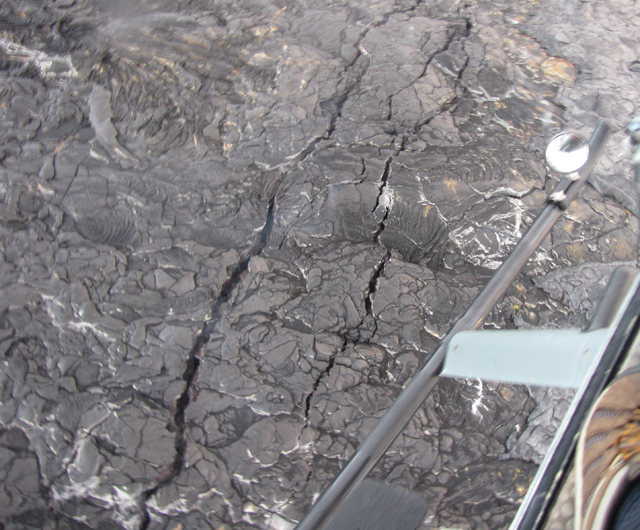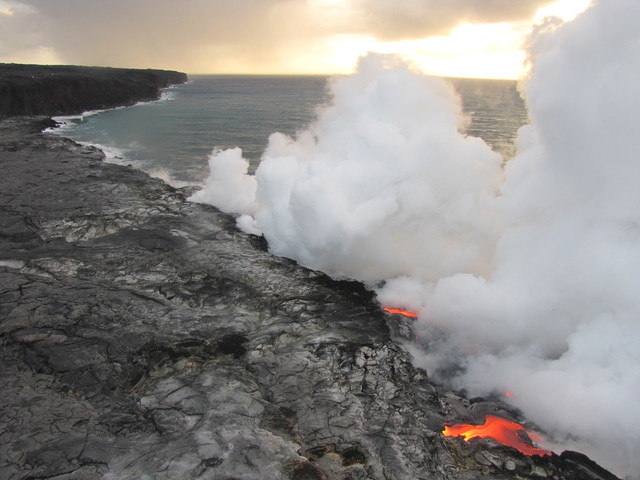HILO — A delta formed by the Kamokuna lava ocean entry is showing signs of increasing instability, according to Hawaiian Volcano Observatory. ADVERTISING HILO — A delta formed by the Kamokuna lava ocean entry is showing signs of increasing instability,
HILO — A delta formed by the Kamokuna lava ocean entry is showing signs of increasing instability, according to Hawaiian Volcano Observatory.
Geologists say they observed prominent cracks Thursday on the surface of the newly formed land, suggesting that a large chunk could collapse into the ocean.
HVO spokeswoman Janet Babb said the cracks are “foreboding of a collapse,” which could present a danger to spectators on the cliff side or those on boat tours.
It’s common for these unstable deltas formed by lava entering the ocean to slip away. But some collapses are larger than others and pose a greater risk to those nearby.
“We’ve seen cracks like these form before,” Babb said. “It’s why we’re tuned into the these.”
Lava continues to enter the ocean in that area and she said a collapse could send hot rocks onto the cliff side and out toward the sea.
“It can create a slosh in the water, potentially swamping a boat,” Babb added.
The ocean entry inside Hawaii Volcanoes National Park has been ongoing since July. The lava flow, known as 61g, is from Kilauea’s Puu Oo vent.
Babb said the lava lake at Kilauea’s summit, which has been unusually high, was visible from the Jaggar overlook Thursday.
HVO recorded a 3.6-magnitude earthquake near Volcano on Thursday afternoon.
The temblor occurred at 12:08 p.m. at a depth of almost 5 miles.
Email Tom Callis at tcallis@hawaiitribune-herald.com.





